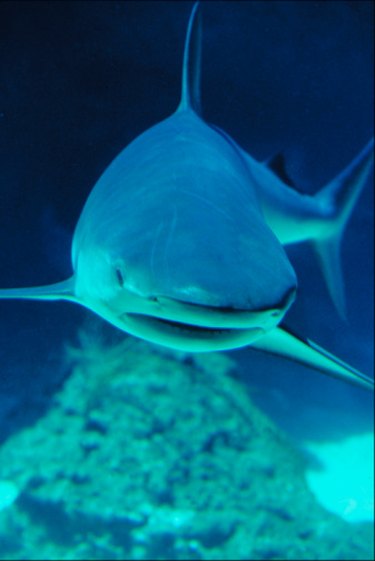
The history of wood and metal finishing is extremely long. William H. Dooley, in his book, "Applied Science For Metal Workers," traces the first use of abrasives to dried sharkskin that was rubbed on various materials to provide a smooth surface. Approximately 250 years ago, the first primitive sandpapers and emery cloths were produced using a backing coated with glue, sprinkled with abrasive and hung up to dry. Modern abrasives are mass produced to exacting standards.
Sandpaper Versus Emery Cloth
Video of the Day

Sandpaper is a general term used to describe flexible sheets of paper or cloth coated with abrasive particles. Emery cloth is a specific abrasive made using emery, a hard black and brown stone native to Turkey. As the names suggest, emery cloth is fabric-backed, while most sandpapers are backed with paper. Emery cloth is generally used to finish metal while sandpaper is a wood finishing tool. Emery may contain traces of iron that can contaminate wood surfaces.
Video of the Day
Sandpaper
There are four kinds of sandpapers used in wood finishing. The products have varying degrees of effectiveness. Flint, an off-white colored abrasive, is the dullest, cheapest and least effective. Flint cuts slowly, clogs often and loses its grit quickly. Reddish garnet is hard, sharp and longer lasting. Aluminum oxide has a chunky tan grain that doesn't fracture easily. Black silicon carbide, an extremely sharp abrasive, is the most effective. A powdered lubricant added to the grit resists clogging.
Emery Cloth
Emery cloth is made from different grades of Turkish emery stone. Metal machine shops prize emery cloth for its quality, extreme hardness and durability. Metal is harder than wood and therefore requires an abrasive that can withstand heavy use. Emery cloth is graded from 8 to 120; the larger the number, the smoother the finish will be. A grade from 8 to 10 would represent the cutting ability of a wood rasp. Grade 120 is representative of a dead-smooth file.
Sandpaper Classification
Sandpaper is classified according to grit--the number of abrasive grains per square inch. A coarse grit of 40 to 60 is suitable for removing paint or old finishes. Preliminary sanding on rough wood is best done with a medium grit of 80 to 120. Final sanding on soft woods requires a fine grit of 150 to 180 while hard woods may need very fine sandpaper, from 220 to 280. Extra fine, 320 to 400 grit is for sanding between finish coats, while the 500 to 600 super fine grits are for polishing.